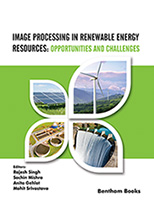Preface
Three of the great challenges facing humanity in the 21st century are energy supply, climate change, and global food security. Although global energy demand is expected to continue to increase, the availability of low cost energy will continue to diminish. Coupled with increasing concerns about climate change due to the CO2 release from the combustion of fossil fuels, there is now an urgent need to develop clean, renewable energy system. Hydrogen is a clean, zero carbon emission, and renewable energy carrier, with a high specific heat of combustion. Hydrogen can be used in internal combustion engines to generate mechanical power or in fuel cells to generate electricity. As hydrogen can be produced from many natural sources, it is expected to have a stable price in the future, independent of the fluctuation in price and availability of single sources. Hydrogen also allows flexibility in balancing centralized and decentralized power supply.
The use of biofuels for transport is becoming of increasing importance due to the environmental concerns relating to climate change, depleting fossil fuel reserves, and reducing reliance on imports. This is leading to international, national and regional focus on alternative energy sources. In the EU, transport is responsible for an estimated 21% of all greenhouse gas (GHG) emissions. A range of actions is being taken to reduce emissions from transport such as promoting the use of biofuels. Among alternative biofuels, hydrogen seems to be more advantageous due to the fact that it has a higher specific heat of combustion and does not contribute to the Greenhouse effect.
Among other alternative production methods such as pyrolysis, gasification, steam gasification, steam reforming, and electrolysis which are highly energy intensive processes, biological methods are promising both in terms of ecological and economical reasons. On the other hand, if biohydrogen systems are to become commercially competitive they must be able to synthesize H2 at rates that are sufficient to power fuel cells of sufficient size to do practical work, and further research and development aimed at increasing rates of synthesis and final yields of H2 are essential.
This eBook aims at contributing to this target. We hope that the chapters contained within this eBook will be useful and inspiring for many researchers and people who have interest in hydrogen.
Nuri Azbar
Ege University
Turkey
David B. Levin
University of Manitoba
Canada





